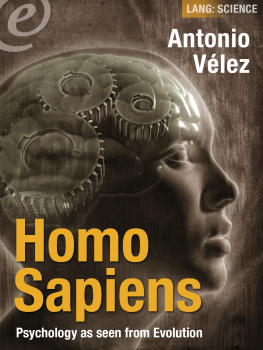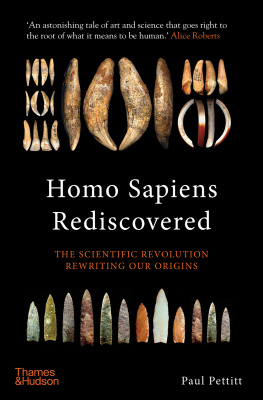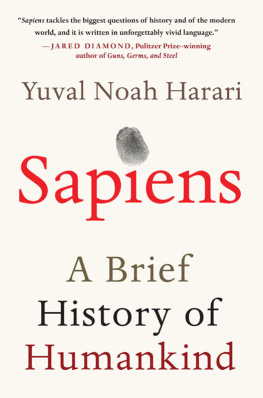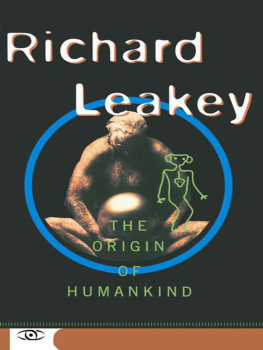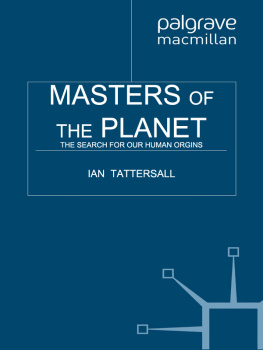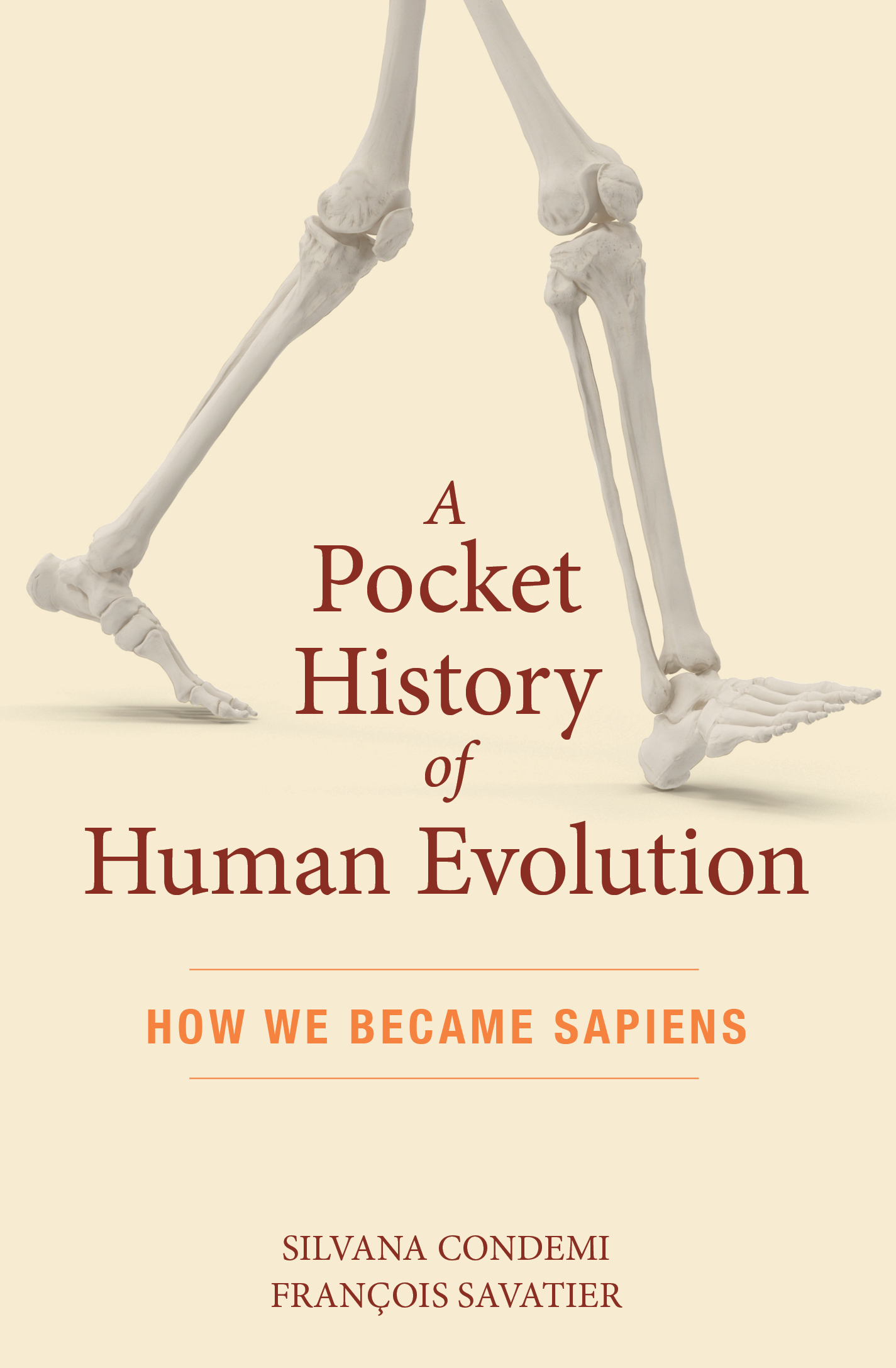
About the Authors

Silvana Condemi , a paleoanthropologist, is the research director of the National Center for Scientific Research, the largest public scientific research organization in France, at Aix-Marseille University.
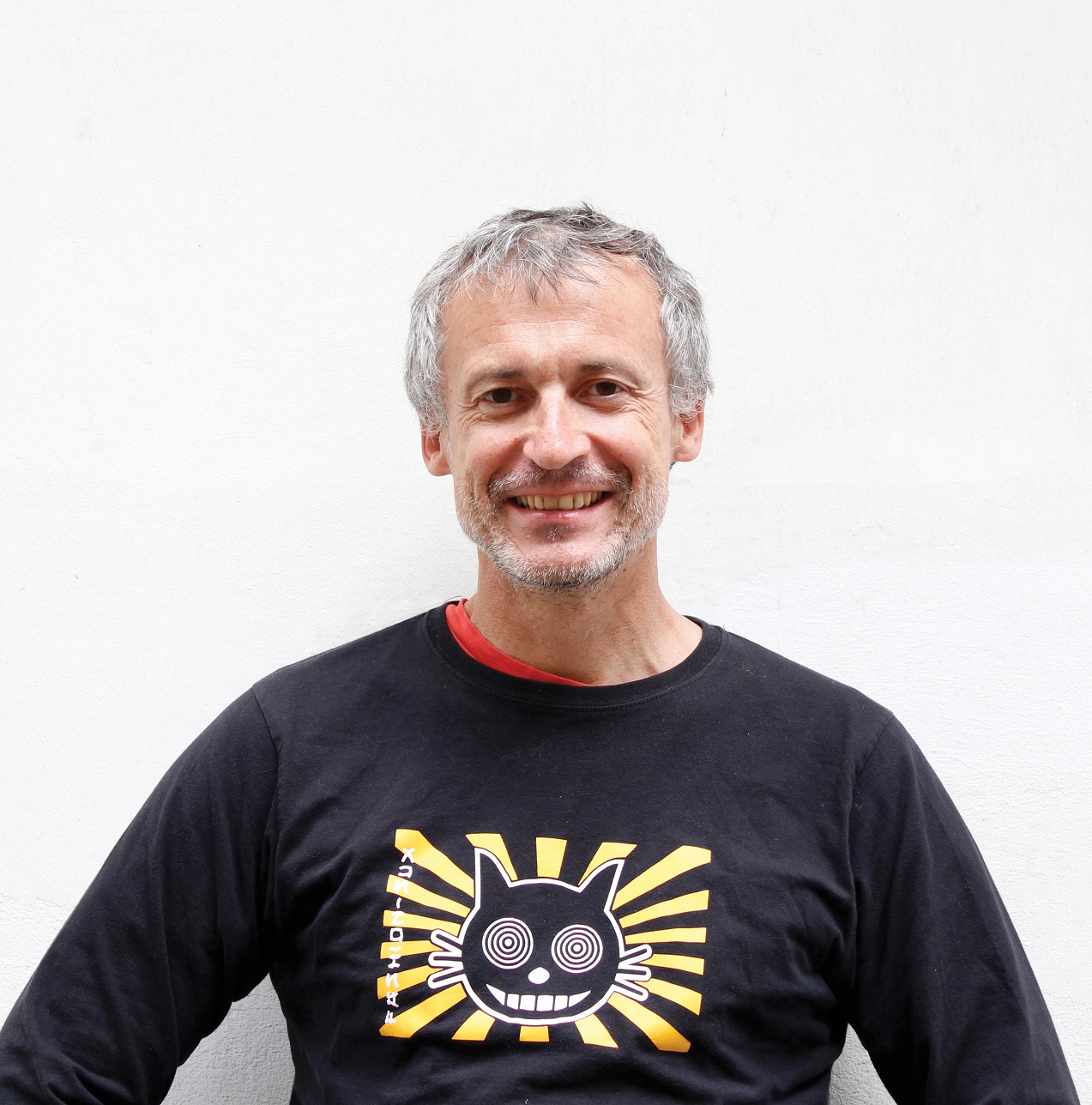
Franois Savatier is a journalist for the magazine Pour la Science (the French edition of Scientific American), where he focuses on the science of the past.
Their previous book is the award-winning Neanderthal, My Brother.
A POCKET HISTORY OF HUMAN EVOLUTION: How We Became Sapiens
Copyright Flammarion, Paris, 2018, 2019
Translation copyright 2019 by The Experiment
Originally published in France as Dernires Nouvelles de Sapiens by Flammarion in 2018.
First published in North America in revised form by The Experiment, LLC, in 2019.
All rights reserved. Except for brief passages quoted in newspaper, magazine, radio, television, or online reviews, no portion of this book may be reproduced, distributed, or transmitted in any form or by any means, electronic or mechanical, including photocopying, recording, or information storage or retrieval system, without the prior written permission of the publisher.
The Experiment, LLC
220 East 23rd Street, Suite 600
New York, NY 10010-4658
theexperimentpublishing.com
THE EXPERIMENT and its colophon are registered trademarks of The Experiment, LLC. Many of the designations used by manufacturers and sellers to distinguish their products are claimed as trademarks. Where those designations appear in this book and The Experiment was aware of a trademark claim, the designations have been capitalized.
The Experiments books are available at special discounts when purchased in bulk for premiums and sales promotions as well as for fund-raising or educational use. For details, contact us at .
Library of Congress Cataloging-in-Publication Data
Names: Condemi, Silvana, author. | Savatier, Franois, 1961- author.
Title: A pocket history of human evolution : how we became sapiens /
Silvana Condemi and Franois Savatier.
Other titles: Dernires nouvelles de sapiens. English
Description: New York : The Experiment, 2019. | Originally published in
France as Dernires Nouvelles de Sapiens by Flammarion in 2018. |
Includes bibliographical references and index.
Identifiers: LCCN 2019030095 (print) | LCCN 2019030096 (ebook) | ISBN
9781615196043 (trade paperback) | ISBN 9781615196050 (ebook)
Subjects: LCSH: Human evolution--History. | Human beings--History.
Classification: LCC GN281 .C586413 2019 (print) | LCC GN281 (ebook) | DDC
599.93/809--dc23
LC record available at https://lccn.loc.gov/2019030095
LC ebook record available at https://lccn.loc.gov/2019030096
ISBN 978-1-61519-604-3
Ebook ISBN 978-1-61519-605-0
Cover and text design by Beth Bugler
Cover illustration courtesy 3DMI/Shutterstock.com
Translation by Emma Ramadan
Illustrations by Thomas Haessig
Author photographs by Pauline Alioua-Flammarion (Silvana Condemi) and Ingrid Leroy (Franois Savatier)
Manufactured in the United States of America
First printing November 2019
10 9 8 7 6 5 4 3 2 1

Introduction
H omo sapiens is a strange animal. Our ancestors first lived in trees, then came down to explore the ground. Then they became bipeds and eventually explored the worldfrom there, the possibilities were endless. This changing behavior is one of the greatest enigmas there is, but we are in the process of unraveling it, with the help of amazing recent advancements in prehistoric sciences.
Through the extraction and sequencing of fossilized DNA weve learned that 40,000 years ago we were still sharing Earth with at least three other human species, and we know that Sapiens, an African species, crossbred with two other species outside of Africa. From new fossils weve also been able to prove that our ancestors did not originate exclusively in east Africa but were actually a Pan-African species. Weve also discovered that Sapiens actually left its Pan-African cradle for the first time 100,000 years earlier than we had previously thought.
Though we have discovered so much about Homo sapiens over the years, there are still many unanswered questions about what caused us to become uniquely human. Was it climate change that propelled our supposed arboreal ancestors from the forests onto the ground in the savannas, setting in motion a series of complex anatomical changes? Was it bipedalism, which freed up our hands for other tasks? The use of tools? Our large brains? Did we become human because we were capable of empathy and cooperation?
For a long time, there were contradicting theories. Then, in 2015, we discovered something astonishing: 3.3 million years ago, in what would become present-day Kenya, stone tools were being made by hand. The oldest human fossil is estimated to be from 2.8 million years ago, so the hands that made these tools could not have been human. They could very well have belonged to Australopithecus, a prehuman. So it wasnt tools that made us human after all.
This news has led us to take a closer look at our ancestors, to discover new developments about Sapiens. In this book, we will focus on the progressive stages of hominization, the evolutionary transformation of prehuman forms into Homo (including the cultural aspect of becoming human), which began in Africa more than 3 million years ago with Australopithecus. This was an astonishing transformation, one that gave rise to a strange and singular erect creature with strong cognitive abilities, whose most evolved form, Sapiens, carries the heritage of all its ancestors.
We all know that the primary role of Sapienss advanced cognition is to help us survive. But where? In nature or in society? Sapiens is weak when alone in nature, but in groups we become the greatest predator that has ever existed. This seems ecologically impossible: a ubiquitous species that has transformed nature into its homea home that has now reached global dimensions. In this book, we will explain this enigmatic evolutionary saga. This is the history of a cultural animal: you.
Chapter 1
A Biped Descends from an Ape
It was the increasing use of natural resources that pushed ancient primates toward the first human form. This not only led our ancestors toward bipedalism, walking upright on the ground, a more efficient way of moving, but it also triggered a self-reinforcing cycle: the more bipedal they were, the more success they had in collecting resources on the ground, which reinforced bipedalism, and so on. This alone, however, does not explain why humans became permanent bipeds.
I n 1748, humans officially became animals for the first time. In his book Systema Naturae (The System of Nature), the botanist and zoologist Carl Linnaeus (170778) placed us in a group of related animal speciesa genusthat he called Homo, and classified us as sapiens, meaning wise. Today, Homo sapiens is the only existing human form.
As mammalswarm-blooded animals that nurse their youngSapiens are members of the order of primates: apes with five fingers, front-facing eyes, and an upright torso when sitting. We dont know when primates first appeared, but we do know that they already existed during the Eocene era, which occurred from 56 to 33.9 million years ago. Where did they come from? We dont know this either, but 70 million years ago, when dinosaurs dominated Earth, there also existed a proto-primate called
Next page


